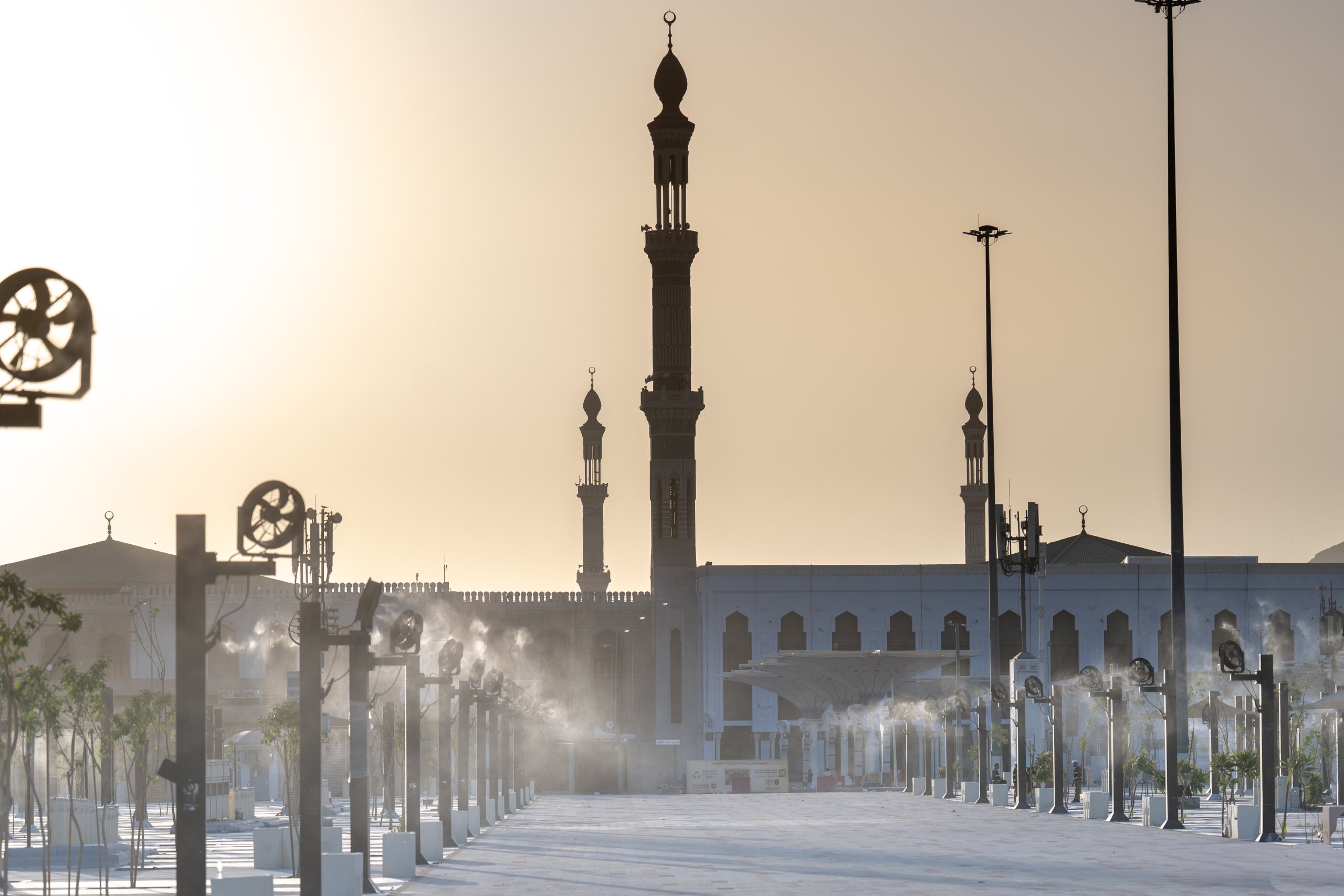A Story Told Through the Sacred Sites…
Kidana Development Company—the executive arm of the Royal Commission for the City of Makkah and the Holy Sites—has crafted a story of more than 22 developmental projects across the sacred sites. Plans were laid, roadmaps drawn, and needs assessed. Objectives were clearly defined and their impact measured before implementation. Field teams then moved across the sacred sites, working tirelessly with the comfort of the Guests of the Merciful as their top priority. With strong determination at the beginning, and a deep sense of accomplishment along the way, they now await the arrival of pilgrims to enjoy a smooth and blessed Hajj journey—one dedicated to serving them. They look forward to the moment the success of the 1446H Hajj season is announced, fulfilling the aspirations of the wise leadership—may God preserve them—in enriching the pilgrims’ experience.
Humanity and Compassion
Kidana prioritized the comfort of pilgrims in implementing its various projects throughout the sacred sites. One key initiative was the development of Muzdalifah’s route through the “Mashaer Path” project, which spans 170,000 m². It was equipped with eco-friendly rubber flooring across 103,000 m² to help reduce ground temperature, physical fatigue, and the risk of slipping. Around 15,000 m² were also landscaped with greenery to cool the environment.
To improve transportation and ease movement for pilgrims, Kidana designated separate paths for vehicles, golf carts, and mobility carts. The route is enhanced with comprehensive urban furnishings: 385 benches, 780 water fountains, 240 phone charging units, 241 misting poles, and 12 canopies. Additionally, 70 informational and educational signboards were installed along the route.
To further ensure comfort, Kidana prepared 28,000 m² of rest areas for pedestrians between the holy sites. These areas help lower temperatures and improve service quality. They include 60 benches, 15 commercial kiosks, 25 mist fans, 29 canopies, 7,900 m² of rubber flooring, and landscaped green spaces—all contributing to an easier and safer Hajj.
Recognizing the spiritual nature of the Hajj journey, the sacred sites have been transformed into a more comfortable environment through the planting of about 290,000 m² of greenery, including over 20,000 trees. Drinking water stations were built over 2,400 m² for easy access. In the Arafat area, particularly Jabal al-Rahma, 196,000 m² were prepared with 1,200 m² of canopies and 129 mist fans to reduce heat stress and the impact of direct sunlight during rituals.
Kidana also targeted areas of high pilgrim concentration for shading and cooling projects: 85,000 m² of the Namira Mosque courtyard were developed with 320 canopies, 350 mist poles, and tree planting. In Mina, 35,000 m² were shaded and cooled with mist fans, and in Arafat, 60,000 m² received similar upgrades. In the eastern courtyard of the Jamarat facility, 200 mist fans were installed to minimize sun exposure.
Quality and Progress
In Mina, accessing elevated camps has become easier with the replacement of concrete stairs with 32 escalators, making movement less strenuous, especially for the elderly and sick. Kidana also improved sanitation facilities, building 5,628 double-story toilets across 61 complexes to expand capacity.
Through the “Towards Mina” project, Kidana improved spatial guidance in Mina, aiding crowd flow, reducing lost pilgrims, and guiding them to their camps using color-coded signage that corresponds to camp zones and Jamarat levels. Additionally, 135 waste compactor sites in Mina were rehabilitated to enhance cleanliness and environmental safety.
To ensure safe and comfortable accommodation, Kidana—alongside the private sector—launched the first phase of the double-story tent project, covering more than 20,000 m² and comprising over 40 buildings equipped with advanced construction technologies. In Arafat, more than 27,000 m² inside the legal boundary were developed to facilitate crowd management and improve the distribution of pilgrims, especially during peak times.
Healthcare
Acknowledging that pilgrims’ comfort isn’t complete without comprehensive healthcare, Kidana built an emergency hospital in Mina in under 30 days. The hospital spans 5,300 m² and has a capacity of over 200 beds. Furthermore, 71 temporary ambulance launch centers were established across the sacred sites, in addition to 15 emergency service units strategically located along the route to offer logistical support—such as water, light meals, and guidance—for pilgrims.
Enriching the Experience
The comfort of pilgrims wasn’t just a goal, but their well-being was an essential part of the development journey. Kidana established more than 61 rental units designed in accordance with the architectural identity of Makkah and the sacred sites. For the first time, contracts were signed with local brands to offer services during the Hajj season in sectors such as catering, banking, pharmacies, restaurants, and cafés. Additionally, 70 charity distribution centers were created to organize charitable service delivery to pilgrims during the season.
The Honor of Service
Every Hajj season stands as a testament to the collective spirit of all sectors involved in serving the Guests of the Merciful. They work in harmony, unified by purpose, to ensure a safe and smooth Hajj journey. From the moment pilgrims arrive in the holy land to the moment they complete their spiritual rites and return home, they are met with care and services befitting the sanctity and significance of this sacred journey.


